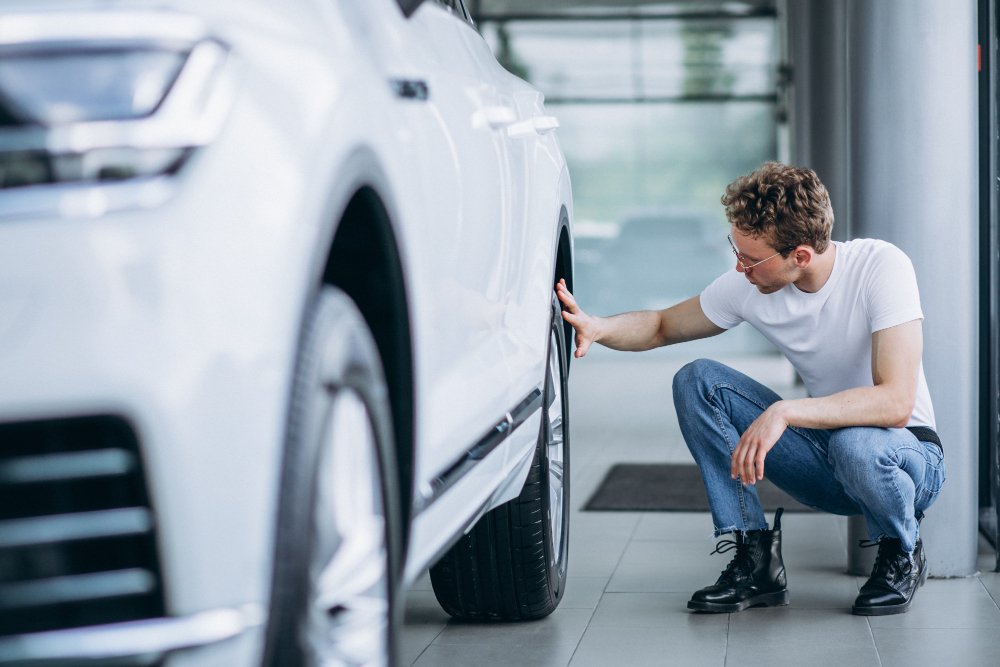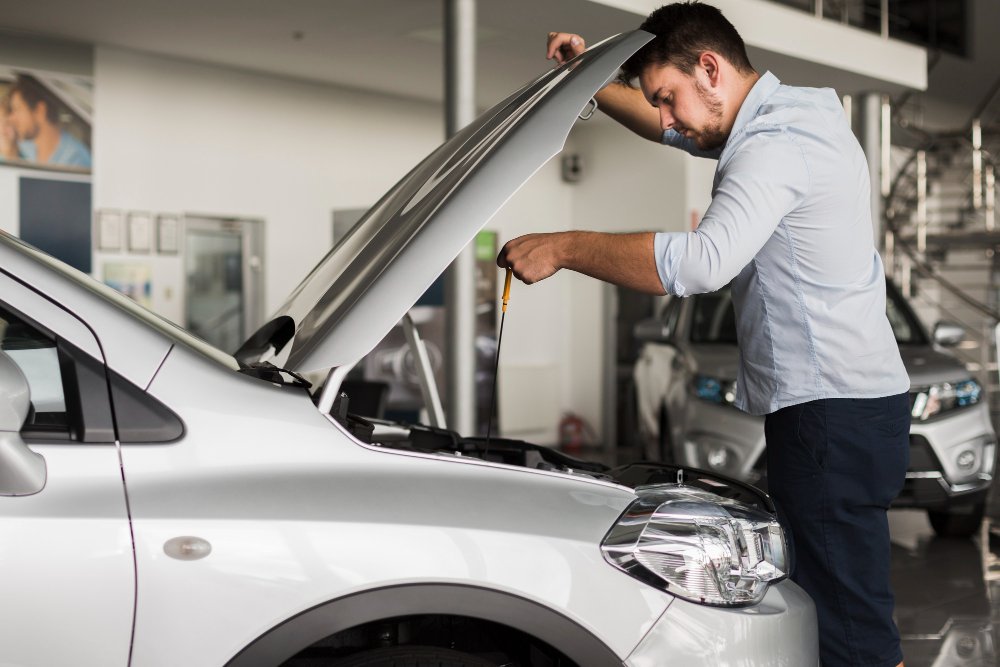How to Look After Your Car’s Bodywork?
- October 1, 2023
- Blog

“Beauty lies in the eyes of the beholder”. No quote can be more accurate about a car’s exterior than this one. It’s the first thing everyone looks at, and no matter how exceptional the interior is, it is the exterior that defines not just your car’s personality but yours as well. However, it’s not just the visual pleasure for which you need to maintain the exterior and keep it in an immaculate condition; it’s also its resale value. Any hard scratches and dents on your vehicle will affect the resale value. You can expect to fetch more than the fair price if your car’s exterior is in excellent condition. So, what should you do to keep the exterior attractive and shiny?
Washing It Often and Washing It Right
Every car enthusiast wants to wash his car himself, and though you might avail of professional services, nothing can match the pleasure of doing it yourself. We recommend both. Your car’s exterior gets a regular dose of dust, grime, and human touch. Washing and cleaning your car often can prevent the build-up of contaminants with corrosive elements. But before washing it, are you sure you know how to do it right? Do you wash your car in steps which professionals swear by? Do you use the right tools and supplies? For example, should you rinse or dust your car with a cloth before rinsing? Follow our tips for giving your car a perfect wash.
Step-by-Step Perfect Washing
- Wash and Rinse: Always start the washing process with rinsing. You can do this with the help of a bucket, hose pipe, or pressure washer. The last one is undoubtedly the most effective, as it releases high-pressure water, which can reach all the nooks and crannies. Rinse and wash your car well enough to eliminate all dust and grime.
- Shampoo your Car: Add some car shampoo to a bucket of water. Do not use detergents or dish soap. Car shampoos have been specially formulated for cars and do not contain strong chemicals. Mix the shampoo well. If you use a pressure washer, you can attach a foam gun with it and use it to cover your car in a thick, soapy foam layer. It makes shampooing more exciting and effective. If you choose manual labour, use a microfiber cloth or a special car washing mitt. Soak it in soapy water and cover your car with shampoo. Let the shampoo act for five minutes.
- Rinsing and Drying: Once the shampoo has done its job, use your pressure washer, bucket, or hose pipe to wash away the soapy layer. Dry your car with the help of another microfiber cloth. Go easy on your car while drying.
Waxing for Silk-Smooth Exteriors
The washing and drying process eliminates debris, dust, and grime from your car’s exterior. However, the process leaves your car’s surface dry and rough. The drying cloth also leaves swirl marks on your car’s body, even if you use a microfiber cloth. It is now time to moisturize your car, and there is no better way to do it than using a good quality wax. Waxing also creates a protective layer on your car’s paint and guards it. You can choose carnauba wax, hybrid wax, liquid wax, hard wax, or spray wax. Old is gold, they say, and hard or carnauba wax still gives the best results. Many suitable spray waxes are on the market today, making waxing much easier and more effective. No matter which type of wax you choose, you still have to do it right.

Step-by-Step Smooth Waxing
- Wax right after you have washed and dried your car.
- Park your car in a shaded place where there is low or no dust.
- Use applicator pads to apply wax.
- Apply wax in one section of your car at a time. For example, wax the hood area first. Apply a thin layer of wax in a circular motion and cover the entire section before moving to the next.
- Avoid applying wax on non-metallic parts.
- Let the wax dry for five to ten minutes, then buff it with a microfiber cloth.
- Use another microfiber cloth to finish the exterior.
Ceramic Coating of Your Car’s Exterior
Whoever invented ceramic or glass coating did a great favour to car enthusiasts and professional detailers. Although you can try your hands on ceramic or glass coating yourself, we highly recommend getting it done by a professional detailer. That’s because the process requires the vehicle to be treated in a virtually dustproof environment, which might be impossible for you to do at home. Depending on the level of protection a particular brand of ceramic coating offers, the protective layer can last from three months to three years. The ceramic or glass layer protects your car’s paint from ultraviolet rays, rust, minor scratches, dust, and grime. It gives a glossy and shiny look to your car. The protective features of the coating repel water, which falls off the car’s surface like beads.
- Washing and Drying: The coating process starts with washing and cleaning the car thoroughly, as we detailed above.
- Decontamination: Once the vehicle has dried, use clay bars to decontaminate the surface of your car’s exterior. The clay makes the car surface smooth and ensures easy application of the ceramic coating.
- Paint Correction: Old cars may require paint correction, while new ones do not need it. Polishing compounds can be used for correction and removing swirl marks from the car’s surface.
- Isopropyl Alcohol Application: Use a 30 to 50% solution of Isopropyl alcohol to wipe the entire car surface. This step ensures that the surface is free from any contaminants which might affect the ceramic bonding step.
- Masking: Use masking tape to cover all non-metallic exterior parts of the car to prevent them from being coated with ceramic or glass.
- Apply Ceramic Coating: Read the manufacturer’s instructions before applying the coating. Use the applicator pads that come with the coating and apply a fine layer on the exterior, working only a cross-section at a time. Use a very gentle touch to spread it evenly. Remember, it is best to apply glass coating in an enclosed room with lots of lights so you can clearly observe the car’s surface.
- Curing: Once you have applied the glass coating to all sections of your car, it is time to leave it for curing. The curing time is necessary for the ceramic coating to bond with the paint for your car. This may range from one to three days. Additional coatings may be required to achieve a higher degree of protection.

Minor Dents and Repairs
Even the dents you consider minor will increase the damage to your car’s exterior over time. If they are not addressed on time, it could result in chipping off your car paint, which would require touching or paint correction. Ignored dents can also seriously reduce the car’s resale value. Visit your local garage occasionally to address minor dents and scratches. Keep your car waxed or get ceramic coating to protect it from minor scratches. Don’t try to remove dents by yourself, you might end up increasing the damage unless you are a professional.
Conclusion
Maintaining your car’s bodywork will not only make a lasting impression on people but also fetch you a good price when you want to sell it. Bodywork can be kept in pristine condition just by following some simple and regular practices. Wash it regularly, wax it often, and get a protective coating to keep your paint job shining.

